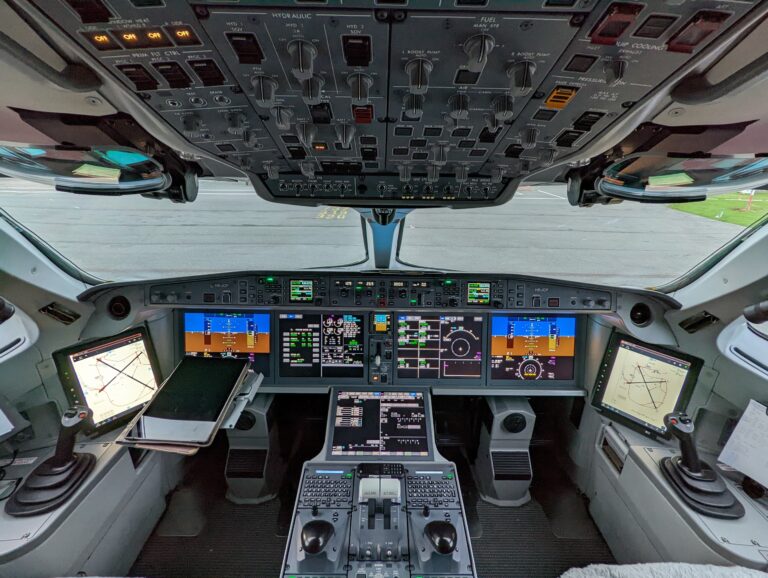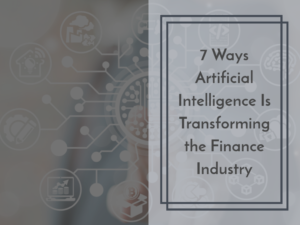Aviation professionals can apply AI-powered predictive analytics to improve safety in everything from aircraft design to airport logistics. Safety is at the core of success in this industry, so it needs cutting-edge tools to stay ahead of risks and hazards. AI can streamline and automate key safety processes such as design, monitoring, testing and more.
AI-Powered Predictive Maintenance
AI is a powerful tool for improving aircraft safety through predictive analytics. Combining AI with data collection devices like IoT sensors lets aviation companies and technicians automate airplane monitoring.
“Predictive maintenance involves using AI to analyze data from IoT sensors and predict when repairs are needed before something breaks. It prevents accidents and delays and can save aircraft owners and aviation companies money.”
Predictive maintenance can reduce maintenance costs by up to 30%, lessen downtime by 45% and eliminate up to 75% of breakdowns. As a result, the return on investment is very high.
AI is today’s most advanced form of predictive maintenance, using algorithms to automate performance and sensor data analysis. Aircraft owners or technicians set up the algorithm with airplane data, including its key systems and typical performance metrics. This information serves as a baseline for comparison so the algorithm can identify unusual activity.
IoT sensors that detect performance outside expected margins trigger the AI to alert maintenance personnel. Aircraft technicians can then review the flagged performance data and determine if a tuneup, test or repair is necessary.
This process can catch potential mechanical issues much faster than conventional methods. Inspecting aircraft is still important in responsible maintenance procedures, but predictive maintenance can make inspections more efficient.
Additionally, it’s always possible that potential problems aren’t immediately noticeable during inspections or are simply overlooked. AI monitoring reduces the risk of scenarios like this.
Analyzing Aircraft With Digital Twins
AI-powered analytics can improve safety through digital twins as well as predictive maintenance. A digital twin is a highly detailed, realistic virtual model of a real system, such as a vehicle or building. Digital twins often use machine learning and AI to simulate the effects of operational or design changes.
Digital twins have various applications in the aviation industry. For example, aircraft engineers often use simulations to model and test part designs. This allows them to understand a component or aircraft’s possible performance before manufacturing a prototype. They can also try new ideas and configurations at little or no additional cost.
“Digital twins can improve safety by revealing potential hazards or mechanical issues that might only be noticeable over time or under certain conditions.”
Modelling programs allow aircraft designers to test parts and planes more thoroughly than might otherwise be possible, increasing the likelihood of identifying potential hazards.
Additionally, manufacturers can use a digital twin to safely investigate problems if customers report an issue with their unit of a certain aircraft. The ability to virtually simulate any scenario without potentially damaging a real plane can save thousands of dollars and ensure testing doesn’t put technicians at risk.
Digital twin testing findings can help manufacturers update service information letters (SILs) and ensure FAA compliance. It also helps improve future aircraft designs and keeps pilots and passengers safe at all times.
Predictive Analytics for Airport Safety
Digital twins can also be useful in designing and optimizing airports. Even those outside the aviation industry know how complex the layout can be. Optimizing these structures is complicated but vital for ensuring safety during emergencies.
A digital twin can be invaluable for analyzing and improving airport safety. AI algorithms simplify analyzing data on everyday operations, HVAC and environmental control, security monitoring, traffic flow and more. All this information can contribute to predictive analytics algorithms highlighting potential bottlenecks, inefficiencies and security risks.
Airport managers can test various solutions to infrastructure-related safety issues using a digital twin. Once they pin down the best solution, they can implement it in the real world. Today’s AI can create highly realistic predictions of how various logistics changes will perform. Testing updates virtually first reduces confusion for passengers as well as airport staff.
Potential Risks of Using AI in Aviation Safety
“AI analytics and digital twins can go a long way toward improving aviation safety, but this technology has risks.”
Professionals must be aware of potential AI drawbacks to implementing it safely. One of the main risks associated with AI is its black-box nature. Developers and users can’t view the logic processes of most of these algorithms. The issue with hidden logic processes is the heightened risk of undetected biases and inaccuracies. When developers and users can’t see how AI connects data points, it is more challenging to notice flawed conclusions.
Black-box AI poses a serious concern in the aviation industry. In fact, explainability is a top priority laid out in the European Union Aviation Safety Administration’s first-ever AI roadmap. Explainable AI, sometimes called white-box AI, is designed to have high transparency so logic processes are accessible. This reduces the likelihood of biases and inaccuracies going unnoticed.
This is important for the aviation industry because AI could eventually be used for security screenings, automated airport safety monitoring or even fully autonomous aircraft. Biases and inaccuracies can put lives at risk in these high-risk applications. While explainable AI develops over the next few years, aviation professionals should carefully screen conventional black-box algorithms for signs of data bias.
Generative AI can also pose risks for aviation industry applications. Algorithms like ChatGPT and DALL-E have become extremely popular over the past few years. As seemingly powerful as these models seem, they are far from perfect. For instance, ChatGPT is prone to “hallucinating” made-up research studies or accidentally generating misinformation.
Generative AI currently only shows promise for low-risk applications in aviation, such as automated customer service. However, screening these algorithms for inaccuracies and false information is still important. Aviation professionals can use tools like fact-checking functions to test generative AI before applying it in the real world.
Improving Aviation Safety With AI Analytics
AI-powered predictive analytics can revolutionize aviation safety in various ways. It highlights safety issues and pinpoints innovative solutions, from aircraft design to airport logistics. Professionals can use digital twins to model and analyze systems virtually, allowing for more thorough safety testing.
AI comes with a few risks, such as data bias and inaccuracies. However, careful algorithm selection and monitoring can allow the aviation industry to leverage AI for improved safety for passengers, pilots and airport staff.








